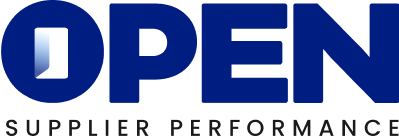Simplify Supplier Quality
Supplier performance is challenging for a lot of reasons. With 20+ years in industrial manufacturing, processing, supply chain, and continuous improvement, we’ve seen the gamut of supplier performance measurement and reporting strategies and experienced the challenges of trying to implement them. It doesn’t matter if you are a Fortune 100 company, or a company with 25 employees, these challenges quickly add up.
For starters, what are the right benchmarks to grade suppliers? We commonly see on-time delivery, rejections at receiving, and cost as common metrics. However, in complex manufacturing, these tired and antiquated measures rarely give us a clear picture of supplier performance and can in fact lead us down the wrong path when selecting a supplier for a new project or a new purchase order.
So why is it so difficult? Most companies manually collect their supplier performance data from multiple systems within the business. Since they come from different data sources, a lot of work goes into overlaying the disparate data into a comprehensible report. Just to understand some simple metrics around one buying decision could take dozens, if not hundreds of man-hours and multiple reports and spreadsheets being emailed back and forth. What a headache!
Although it often goes unsaid, all the front-end work required to develop regular supplier performance reporting means that the data is never real-time. It also makes it inflexible since a minor change in the desired output requires completely restructuring how the information is collected! For instance, if a purchasing manager received a regular monthly report on supplier performance and wanted to compare how two competing suppliers performed on a set of specific part numbers, the data would have to be structured in such a way that:
- Purchase order information for that month reflected parts of interest and was correlated to the two suppliers,
- Receiving inspection results was time appropriate for the period and was actually correlated with the purchase orders,
- Downstream nonconformance data was timely collected and aggregated in the report
Let’s say that the purchasing manager reviews this hypothetical report and sees that supplier A is slightly better than supplier B on a particular part number. To make an informed decision, our purchasing manager wants to know for that part number what drives the better performance. Since the report is static, there’s no flexibility to drill down. The purchasing manager has to call the quality manager to investigate what’s different between the two. The quality manager assigns the task to the supplier quality engineer, or quality analyst to do the research. 3 days later, the quality manager receives the reports and calls the purchasing manager to explain that supplier A has a quality plan in place whereas supplier B was grandfathered in due to a longstanding relationship. It seems the lack of process control with supplier B is driving the lesser performance. In 2021, it should be possible to ask these kinds of questions without a lot of manual labor, excel spreadsheets, word documents, reviewing PDF’s, and digging through emails to get to the bottom of something like this. We need flexible reporting from real-time data.
This is where Open comes in. All of your supplier data, all in one place.
With just a couple of clicks, you can pull up dashboards and reports that update in real-time. Compare and rank suppliers, pull relevant documentation/certificates, drill down to pull together rich insights, and do it all without reports and spreadsheets being emailed back and forth.

Make data-backed decisions lighting fast. Free up your team to get more done. And take back control of your supply base.



